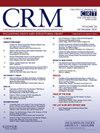Percutaneous pulmonary thrombectomy with aspiration catheters in patients with high-risk pulmonary embolism and absolute contraindication to systemic thrombolysis
IF 1.6
Q3 CARDIAC & CARDIOVASCULAR SYSTEMS
引用次数: 0
Abstract
Background
High-risk Pulmonary Embolism (PE) mortality remains very high. Systemic thrombolysis is effective but carries significant complications and contraindications related to the hemorrhagic risk. Percutaneous thrombectomy using aspiration catheters may be an alternative in patients with a high bleeding risk.
Objective
This study aimed to evaluate the results of catheter-directed thrombectomy using aspiration dedicated catheters in patients with high-risk PE and absolute contraindication to systemic thrombolysis, with specific focus on procedural success, safety, and in-hospital outcomes.
Methods
A prospective study enrolled all consecutive patients diagnosed with high-risk pulmonary embolism and absolute contraindication to systemic thrombolysis, who underwent percutaneous pulmonary thrombectomy using dedicated aspiration catheters. The study documented the effectiveness and complications of the procedure, as well as patient outcomes at discharge and during the follow-up period.
Results
Thirteen patients underwent percutaneous pulmonary thrombectomy using aspiration dedicated catheters. The procedure was successful for all patients, resulting in hemodynamic and respiratory improvement within the first 24 h. No deaths attributable to cardiovascular or respiratory causes occurred during admission or follow-up. Furthermore, no serious adverse events or complications were reported during the procedure or hospitalization.
Conclusions
Percutaneous pulmonary thrombectomy with dedicated aspiration catheters in patients with high-risk pulmonary embolism and contraindications to systemic thrombolysis was associated with excellent clinical results and low rate of complications.
在高危肺栓塞和全身溶栓绝对禁忌症患者中使用抽吸导管经皮肺血栓切除术。
背景:高危肺栓塞(PE)的死亡率仍然很高。全身溶栓治疗虽然有效,但却存在严重的并发症和与出血风险相关的禁忌症。对于出血风险较高的患者来说,使用抽吸导管进行经皮血栓切除术不失为一种选择:本研究旨在评估使用抽吸专用导管对高风险 PE 和全身溶栓绝对禁忌症患者进行导管引导下血栓切除术的结果,特别关注手术成功率、安全性和院内预后:这项前瞻性研究纳入了所有被诊断为高危肺栓塞且全身溶栓绝对禁忌症的连续患者,他们都接受了使用专用抽吸导管的经皮肺血栓切除术。研究记录了手术的有效性和并发症,以及患者出院时和随访期间的治疗效果:13名患者使用专用抽吸导管接受了经皮肺血栓切除术。所有患者的手术都很成功,在最初的24小时内血液动力学和呼吸系统都有所改善。此外,在手术或住院期间也没有发生严重的不良事件或并发症:结论:对于有全身溶栓禁忌症的高危肺栓塞患者,使用专用抽吸导管进行经皮肺血栓切除术临床效果极佳,并发症发生率低。
本文章由计算机程序翻译,如有差异,请以英文原文为准。
求助全文
约1分钟内获得全文
求助全文
来源期刊

Cardiovascular Revascularization Medicine
CARDIAC & CARDIOVASCULAR SYSTEMS-
CiteScore
3.30
自引率
5.90%
发文量
687
审稿时长
36 days
期刊介绍:
Cardiovascular Revascularization Medicine (CRM) is an international and multidisciplinary journal that publishes original laboratory and clinical investigations related to revascularization therapies in cardiovascular medicine. Cardiovascular Revascularization Medicine publishes articles related to preclinical work and molecular interventions, including angiogenesis, cell therapy, pharmacological interventions, restenosis management, and prevention, including experiments conducted in human subjects, in laboratory animals, and in vitro. Specific areas of interest include percutaneous angioplasty in coronary and peripheral arteries, intervention in structural heart disease, cardiovascular surgery, etc.
 求助内容:
求助内容: 应助结果提醒方式:
应助结果提醒方式:


